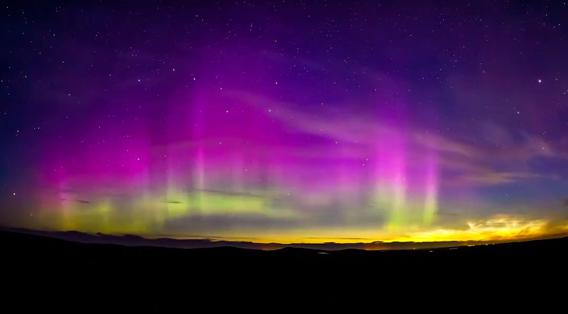It’s weird to think that there are phenomena so close to home as clouds, yet so poorly understood. But noctilucent clouds fit the bill: These high-altitude, rippling phenomena haunt the late twilight sky, and it’s not clear how they form and change. They’re somewhat rare, and rarer still to see with an aurora.
Photographer Maciej Winiarczyk got lucky. He was in northern Scotland on the night of Aug. 4 and was able to capture not only those gossamer webs of glowing ice crystals, but the northern lights as well in this amazing time-lapse video.
Spectacular. My favorite part is at 1:45, when the aurora bursts into life, flashing lush pink and purple colors as nitrogen molecules high in the air are bombarded by the solar wind.
Noctilucent clouds are illuminated by the Sun as well, and are due to incredibly small ice crystals about 75-85 kilometers (45-50 miles) above the Earth’s surface. The crystals are only 0.1 microns in size; a human hair is a thousand times thicker. The aurorae inhabit a region just a dozen or so kilometers higher than the clouds, both in rarefied atmospheric conditions.
The history of these clouds is fascinating, and Wikipedia has an excellent description. I’ve never seen them, as you have to be at extreme latitudes to catch a glimpse. The same is generally true for aurorae. I was hoping to see some when I was in Australia, but alas, no such good fortune for me. And with the Sun not playing along lately, I despair of ever seeing a full-blown display.
Oh well. There’s always the next solar cycle.
Tip o’ the lens cap to Paul Walsh, who was the first of many to send me this link.
